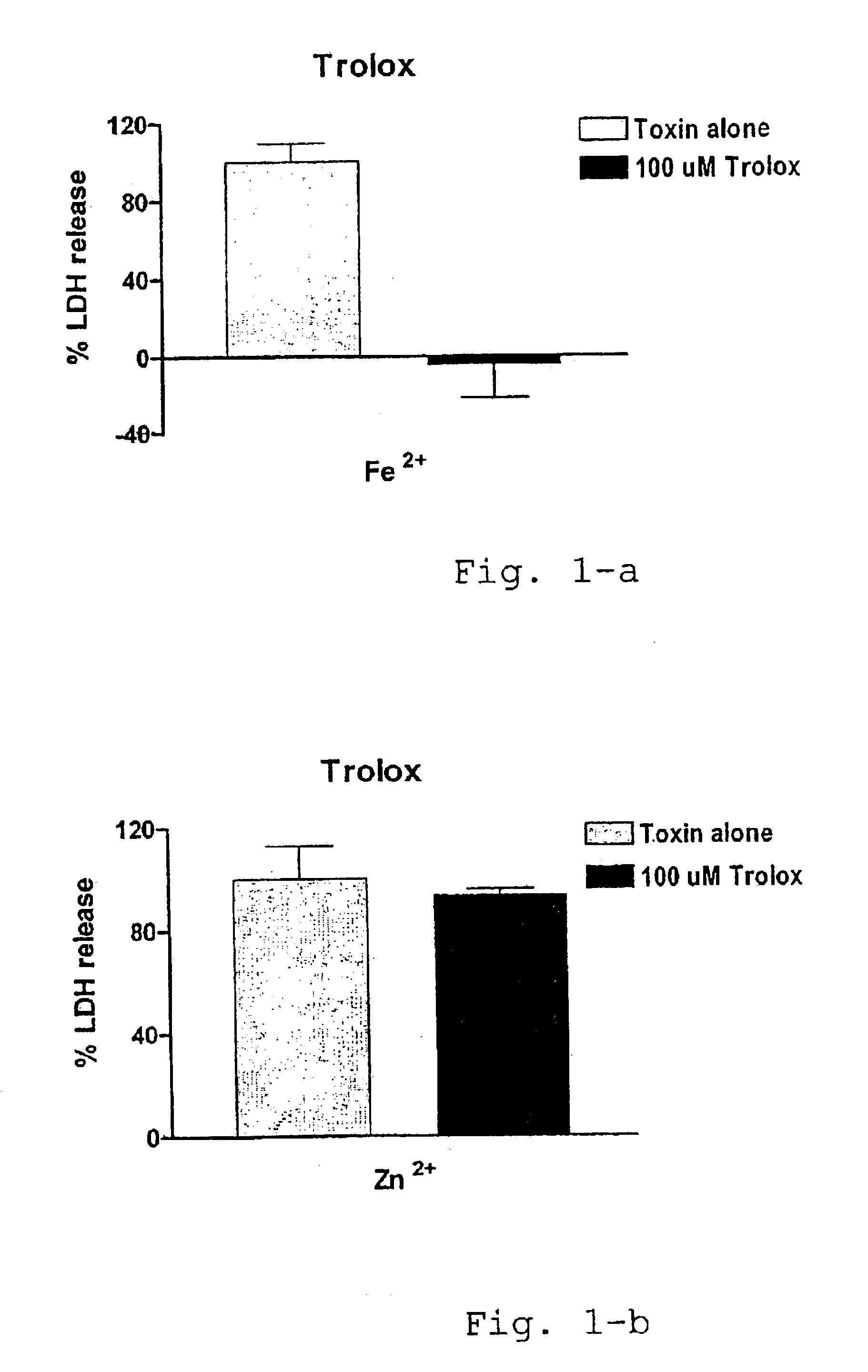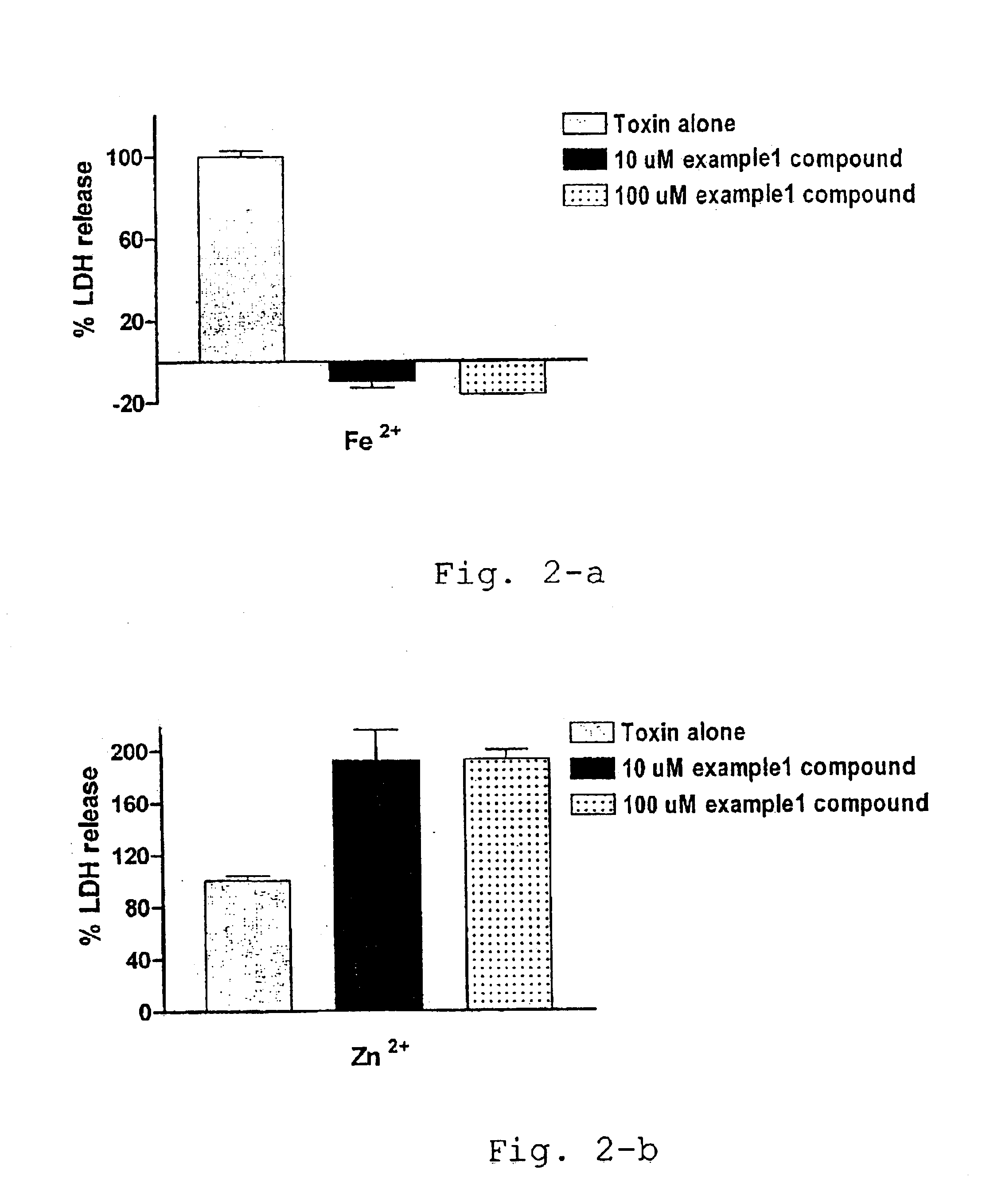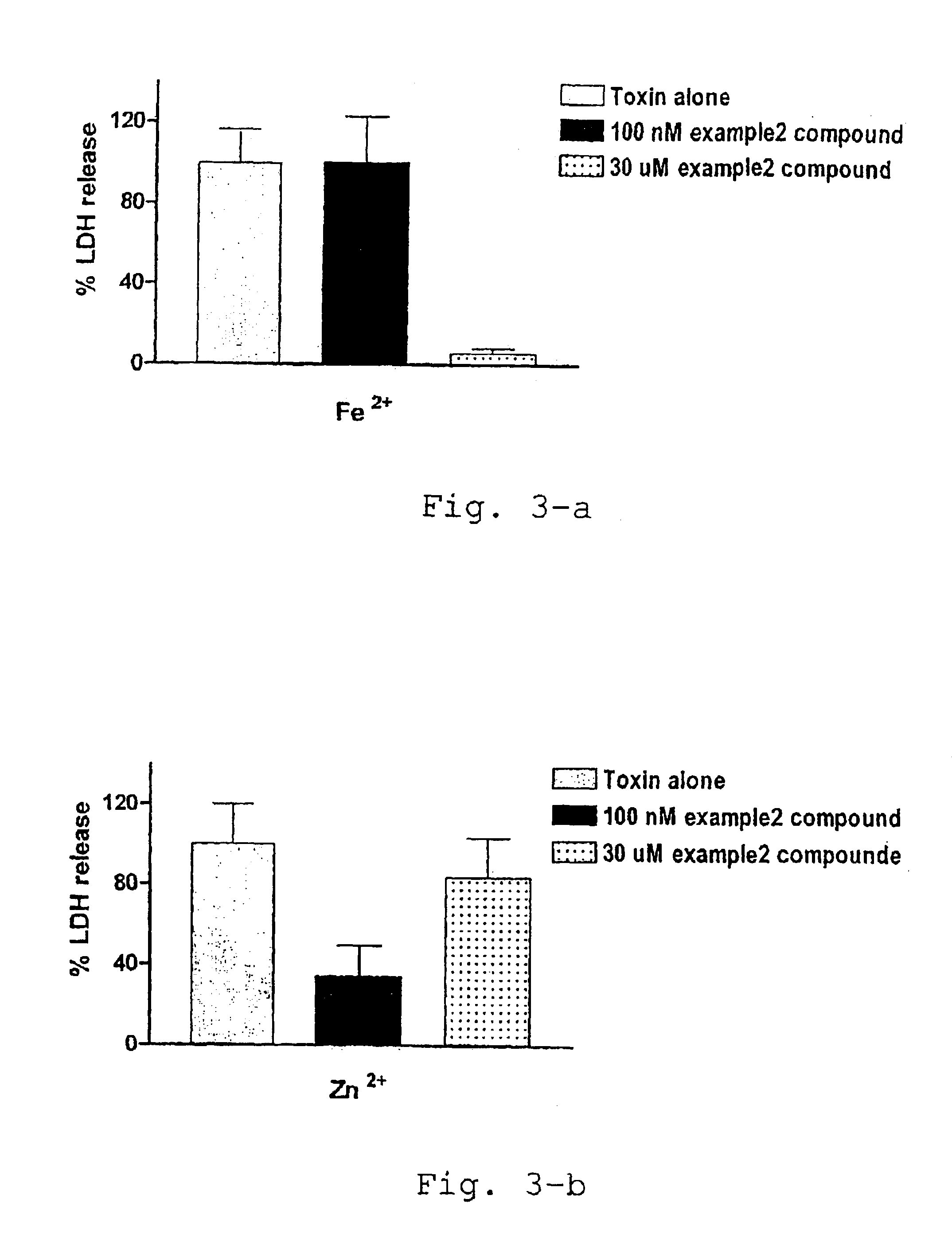N-alkyl-N-phenylhydroxylamine compounds containing metal chelating groups, their preparation and their therapeutic uses
- Summary
- Abstract
- Description
- Claims
- Application Information
AI Technical Summary
Benefits of technology
Problems solved by technology
Method used
Image
Examples
example 1
Synthesis of 4-[N-(tert-butyl)-N-hydroxyamino]-N-thiazol-2-yl-benzamide (4)
[0064]
Step 1: Synthesis of 4-[N-(tert-butyl)-N-(tert-butyldimethylsilyloxy)amino]-benzoic acid (2)
[0065]2,2 g (7.15 mmol) of aldehyde 1 dissolved in acetone (10 mL) was slowly added to H2O / acetone (21:3, v / v, 24 mL) solution containing 1.922 g (12.16 mmol) of KMnO4, and the resulting mixture was stirred for 10 hours at room temperature. After completion of the reaction, it was filtered through a Celite pad and acetone was removed under reduced pressure. Aqueous phase was acidified with 1N HCl, extracted with CH2Cl2, dried over anhydrous MgSO4, filtered and concentrated under reduced pressure. The residue was purified by flash column chromatography (silica, Hex:EtOAc=3:1) to give 1.97 g of compound 2 in 85% yield.[0066]1H NMR (CDCl3): 7.73 (d, 2H, J=8.8 Hz), 7.40 (d, 2H, J=8.2 Hz), 1.12 (s, 9H) 0.92 (s, 9H), −0.13 (br s, 6H)[0067]13C NMR (CDCl3): 172.1, 157.0, 129.7, 124.8, 61.9, 26.4, 26.2 18.0, −4.5
Step 2: S...
example 2
Synthesis of 4-[N-(tert-butyl)-N-hydroxyamino]-N-pyridin-2-yl-benzamide (6)
[0074]
Step 1: Synthesis of 4-[N-(tert-butyl)-N-(tert-butyldimethylsilyloxy)amino]-N-pyridin-2-yl-benzamide (5)
[0075]To a solution of 1.0 g (3.09 mmol) of compound 2 in CH2Cl2 (5 mL) were added 0.733 g (3.71 mmol) of 1-(3-dimethylamino)propyl-3-ethylcarbodiimide hydrochloride, 0.189 g (1.545 mmol) of 4-dimethylaminopyridine, and 0.438 g (4.63 mmol) of 2-aminopyridine. After stirring for 12 hours at room temperature, H2O and ethyl acetate were added. The organic layer was separated, washed with sat'd NaHCO3 solution, dried over anhydrous MgSO4, filtered and concentrated under reduced pressure. The residue was purified by flash column chromatography (silica, Hex:EtOAc=10:1) to give 2.3 g of compound 5 in 75% yield.[0076]1H NMR (CDCl3): 8.58 (s, OH), 8.38 (d, 1H, J=8.3 Hz), 8.28 (s, 1H), 7.8 (d, 2H, J=8.0 Hz), 7.75 (t, 1H, J=8.4 Hz), 7.36 (d, 2H, J=8.3 Hz), 7.05 (t, 1H, J=5.5 Hz), 1.12 (s, 9H), 0.92 (s, 9H), −0.1...
example 3
Synthesis of 4-[N-(tert-butyl)-N-hydroxyamino]-N-pyridin-2-yl-methyl-benzamide (8)
Step 1: Synthesis of 4-[N-(tert-butyl)-N-(tert-butyldimethylsilyloxy)amino]-N-pyridin-2-yl-methyl-benzamide (7)
[0081]To a solution of 0.15 g (0.464 mmol) of compound 2 in CH2Cl2 (10 mL) were added 0.11 g (0.561 mmol) of 1-(3-dimethylamino)propyl-3-ethylcarbodiimide hydrochloride, 0.03 g (0.232 mmol) of 4-dimethylaminopyridine, and 0.072 mL (0.695 mmol) of 2-aminomethylpyridine. After stirring for 2 hours at room temperature, H2O and ethyl acetate were added. The organic layer was separated, dried over anhydrous MgSO4, filtered and concentrated under reduced pressure. The residue was purified by flash column chromatography (silica, Hex:EtOAc=1:1) to give 0.13 g of compound 7 in 70% yield.[0082]1H NMR (CDCl3): 8.55 (d, 1H, J=0.7 Hz), 7.75 (d, 2H, J=8.9 Hz), 7.67 (t, 1H, J=8.5 Hz), 7.58 (s, 1H), 7.32 (d, 2H, J=8.4 Hz), 7.27 (s, 1H), 7.19 (t, 1H, J=6.0 Hz), 4.74 (d, 2H, J=4.8 Hz), 1.08 (s, 9H), 0.89 (s, 9H...
PUM
| Property | Measurement | Unit |
|---|---|---|
| Composition | aaaaa | aaaaa |
| Pharmaceutically acceptable | aaaaa | aaaaa |
| Toxicity | aaaaa | aaaaa |
Abstract
Description
Claims
Application Information
 Login to View More
Login to View More - R&D
- Intellectual Property
- Life Sciences
- Materials
- Tech Scout
- Unparalleled Data Quality
- Higher Quality Content
- 60% Fewer Hallucinations
Browse by: Latest US Patents, China's latest patents, Technical Efficacy Thesaurus, Application Domain, Technology Topic, Popular Technical Reports.
© 2025 PatSnap. All rights reserved.Legal|Privacy policy|Modern Slavery Act Transparency Statement|Sitemap|About US| Contact US: help@patsnap.com



